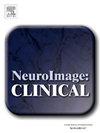Lesion network mapping of REM Sleep Behaviour Disorder
IF 3.4
2区 医学
Q2 NEUROIMAGING
引用次数: 0
Abstract
REM Sleep Behaviour Disorder (RBD) is a parasomnia characterised by dream enactment behaviour due to loss of sleep atonia during REM sleep. It is of considerable interest as idiopathic RBD is strongly associated with a high risk of future α-synuclein disorders. Whilst candidate brainstem structures for sleep atonia have been identified in animal studies, the precise mechanisms underpinning RBD in humans remain unclear. Here, we set out to empirically define a candidate anatomical RBD network using lesion network mapping. Our objective was to test the hypothesis that RBD is either due to damage to canonical RBD nodes previously identified in the animal literature, or disruption to the white matter connections between these nodes, or as a consequence of damage to some other brains regions.
All published cases of secondary RBD arising due to discrete brain lesions were reviewed and those providing sufficient detail to estimate the original lesion selected. This resulted in lesion masks for 25 unique RBD cases. These were combined to create a lesion probability map, demonstrating the area of maximal overlap. We also obtained MRI lesion masks for 15 pontine strokes that had undergone sleep polysomnography investigations confirming the absence of RBD. We subsequently used these as an exclusion mask and removed any intersecting voxels from the aforementioned region of maximal overlap, creating a single candidate region-of-interest (ROIs) within the pons. This remaining region overlapped directly with the locus coeruleus. As sleep atonia is unlikely to be lateralized, a contralateral ROI was created via a left–right flip, and both were warped to the 100 healthy adult Human Connectome dataset. Probabilistic tractography was run from each ROI to map and characterize the white-matter tracts and connectivity properties.
All reported lesions were within the brainstem but there was significant variability in location. Only half of these intersected with at least one of the six a priori RBD anatomical nodes assessed, however 72 % directly intersected with the white matter tracts created from the region of maximum overlap pontine ROIs, and the remainder were within 3.05 mm (±1.51 mm) of these tracts. 92 % of lesions were either at the level of region of maximum overlap or caudal to it.
These results suggest that RBD is a brainstem disconnection syndrome, where damage anywhere along the tract connecting the rostral locus coeruleus and medulla may result in failure of sleep atonia, in line with the animal literature. This implies idiopathic disease may emerge through different patterns of damage across this brainstem circuit. This observation may account for the both the paucity of brainstem neuroimaging results reported to date and the observed phenotypic variability seen in idiopathic RBD.

快速眼动睡眠行为障碍的损伤网络映射
快速眼动睡眠行为障碍(RBD)是一种睡眠异常症,其特征是在快速眼动睡眠期间由于睡眠失张力而导致的梦境重现行为。由于特发性RBD与未来α-突触核蛋白疾病的高风险密切相关,因此引起了相当大的兴趣。虽然在动物研究中已经确定了睡眠张力障碍的候选脑干结构,但在人类中支撑RBD的确切机制仍不清楚。在这里,我们开始使用病变网络映射经验定义候选解剖RBD网络。我们的目的是验证RBD的假设,即RBD是由于先前在动物文献中发现的典型RBD节点的损伤,或这些节点之间的白质连接的破坏,或者是大脑其他区域损伤的结果。我们回顾了所有已发表的由离散性脑损伤引起的继发性RBD病例,并选择了那些提供足够细节来估计原始病变的病例。这导致了25例独特的RBD病例的病变面罩。将这些组合起来创建病变概率图,显示最大重叠区域。我们还获得了15例脑桥卒中的MRI病变面罩,这些脑桥卒中患者经过睡眠多导睡眠检查证实没有RBD。随后,我们使用这些作为排除掩模,并从上述最大重叠区域中删除任何相交体素,在脑桥内创建单个候选兴趣区域(roi)。剩下的区域与蓝斑直接重叠。由于睡眠张力障碍不太可能侧化,因此通过左右翻转创建了对侧ROI,并将两者扭曲到100个健康成人人类连接组数据集。从每个ROI运行概率神经束成像,以映射和表征白质束和连接特性。所有报道的病变都在脑干内,但在位置上有显著的差异。其中只有一半与预先评估的6个RBD解剖淋巴结中的至少一个相交,然而72%直接与桥脑roi最大重叠区域形成的白质束相交,其余在这些束的3.05 mm(±1.51 mm)范围内。92%的病变位于最大重叠区或最大重叠区尾侧。这些结果表明RBD是一种脑干断开综合征,与动物文献一致,连接吻侧蓝斑和延髓的束的任何地方的损伤都可能导致睡眠张力障碍的失败。这意味着特发性疾病可能通过脑干回路的不同损伤模式出现。这一观察结果可能解释了迄今为止报道的脑干神经影像学结果的缺乏以及在特发性RBD中观察到的表型变异性。
本文章由计算机程序翻译,如有差异,请以英文原文为准。
求助全文
约1分钟内获得全文
求助全文
来源期刊

Neuroimage-Clinical
NEUROIMAGING-
CiteScore
7.50
自引率
4.80%
发文量
368
审稿时长
52 days
期刊介绍:
NeuroImage: Clinical, a journal of diseases, disorders and syndromes involving the Nervous System, provides a vehicle for communicating important advances in the study of abnormal structure-function relationships of the human nervous system based on imaging.
The focus of NeuroImage: Clinical is on defining changes to the brain associated with primary neurologic and psychiatric diseases and disorders of the nervous system as well as behavioral syndromes and developmental conditions. The main criterion for judging papers is the extent of scientific advancement in the understanding of the pathophysiologic mechanisms of diseases and disorders, in identification of functional models that link clinical signs and symptoms with brain function and in the creation of image based tools applicable to a broad range of clinical needs including diagnosis, monitoring and tracking of illness, predicting therapeutic response and development of new treatments. Papers dealing with structure and function in animal models will also be considered if they reveal mechanisms that can be readily translated to human conditions.
 求助内容:
求助内容: 应助结果提醒方式:
应助结果提醒方式:


